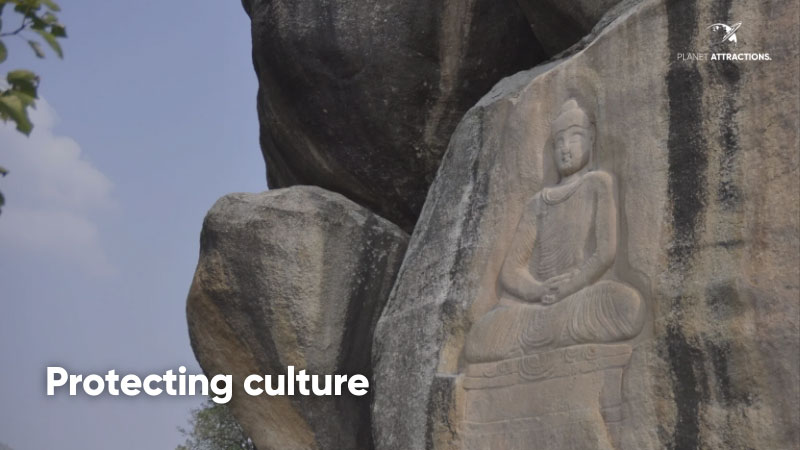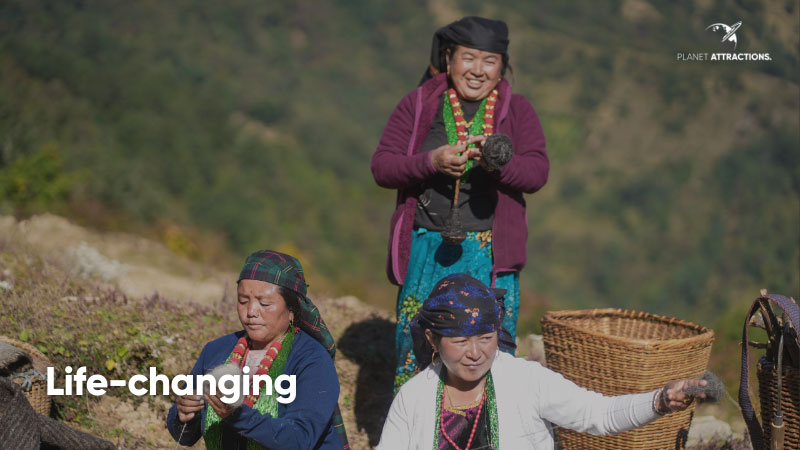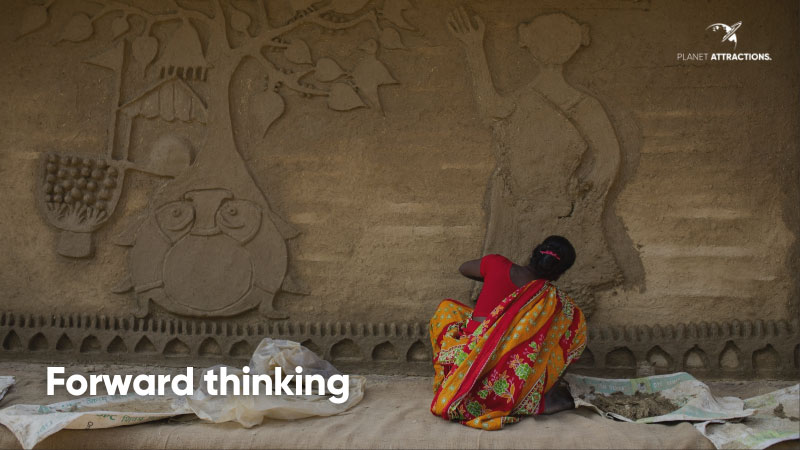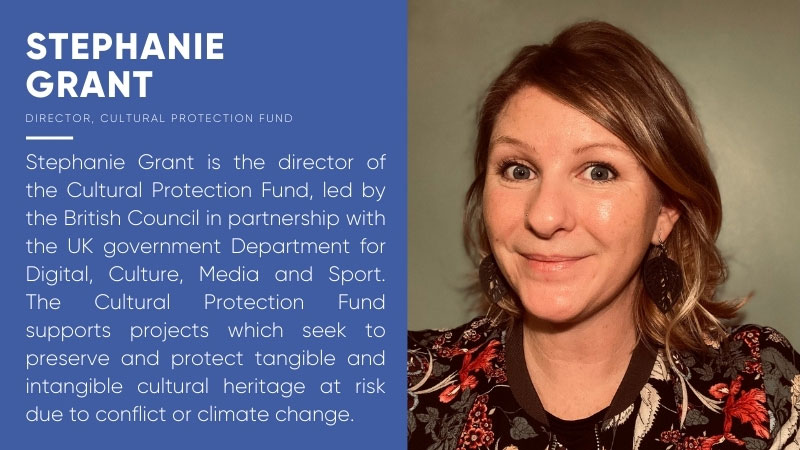|
In a world affected by conflict, climate change and economic uncertainty, culture and cultural icons are under threat, but the British Council and its partners are leading projects across 19 countries to protect and preserve the world's cultural heritage. Stephanie Grant, director of the Cultural Protection Fund explains how this work is being done and why it is essential

Stephanie Grant | Cultural Protection Fund | 28 May 2024

 The living heritage of the Mohana people is currently at risk due to increasingly severe seasonal drought and flooding Credit: Akhatar Kahn The living heritage of the Mohana people is currently at risk due to increasingly severe seasonal drought and flooding Credit: Akhatar Kahn
A recent article in The Guardian asked 380 top climate scientists what they felt about the future. “Hopeless and broken”, came the reply from Dr Ruth Cerezo-Mota, who expects the global temperature to increase by a catastrophic 3C this century.
As if the risk to our very existence on this planet wasn’t enough to concern us, the United Nations reports “the highest number of violent conflicts since the Second World War and a consequent, pervasive sense of insecurity around the world”.
Faced with such momentous global challenges, what can a cultural relations organisation like the British Council do to help?
We can protect the things that make us who we are - the languages we speak, the stories we tell, the music we play, the places, crafts and traditions that mean the most to us.

Since 2016, the Cultural Protection Fund, a partnership between the British Council and the Department of Culture, Media and Sport, has been doing just that.
The Cultural Protection Fund is the UK's main response to international cultural heritage protection. Its role is to safeguard cultural heritage at risk due to conflict and/or climate change and to contribute to sustainable social stability and economic prosperity.
In areas of conflict, cultural heritage is often attacked or even destroyed, to weaken a community’s shared sense of history and identity.
Rising temperatures, extreme weather events and rising sea levels can cause physical damage or destruction to cultural heritage or make an area uninhabitable. This forces local communities with unique knowledge about their cultural heritage to leave their homes and migrate.
So, why is cultural heritage so important, especially in these often life-or-death contexts?

When a community’s cultural heritage is at risk, it affects their human rights, dignity and wellbeing. It can also mean that they have fewer opportunities for education or employment. When communities can’t express themselves and their identities openly, and use communal spaces or places of worship, it can make conflict situations worse and more prolonged.
Cultural heritage is a deep source of knowledge and learning from the past and inspiration when planning for the future. It is a global responsibility to protect cultural heritage, no matter where it is or where we are. No community’s cultural heritage or identity is more valuable than that of any other and its survival adds to the richness of humanity and human experience.
Despite numerous challenges facing our grantees over the past few years – Covid, earthquakes, climate change, armed conflict and war amongst them – the projects we have supported have consistently delivered life-changing results.
The fund has helped teach Syrian music to sixty young refugee people in Lebanon and Jordan, it has strengthened a community by protecting the endangered craft of traditional boatbuilding in Iraq, and it is ensuring that local stories, photographs and memories are protected in the colonial-era McMillan Library in Kenya.
Since 2016, the Cultural Protection Fund has given grants of over £50m (US$63.8m, €58.7m) to 159 projects to protect cultural heritage in 19 countries, but the need for our work has never been greater. Last year alone we received funding requests of almost 20 times the budget for our entire current programme.
In May 2024 we announced 22 new projects, across 10 countries, with a funding total of over £2m (US$2.5m, €2.3m). One of the pieces of tangible heritage we will be helping to protect is the 3.6-million-year-old Laetoli footprint site in Tanzania, the oldest unequivocal evidence of human ancestors walking on two feet. The site is currently at risk of being lost forever due to erosion caused by increasing storms and rainfall.
A new project led by the University of St. Andrews will address the threats facing the footprint sites through digital documentation, training and community engagement. It will also capture local stories, myths, dance and rituals, which are linked to the footprint sites, ensuring that the heritage is permanently preserved and available to future generations.
We’re also piloting the Cultural Protection Fund model in South Asia. We’ll be protecting cultural heritage including Buddhist rock reliefs and the traditional houseboats of the Mohana people in Pakistan, and Maithil women’s paintings and mud art heritage in Nepal.

We have big plans for the future too:
• We want to create a global centre of excellence for cultural heritage protection. Supported by British Council offices in-country and a series of regional hubs, this centre would share insight, learning and best practices on a local and international basis.
• We want to build networks to bring local cultural heritage practitioners and organisations together in-country, and to develop collaborations with international experts.
• We want to develop our unique grant-giving model to support a broader range of activities and grants, working directly with small local delivery groups and organisations whose capacity we will help to build.
• We want to create tailored programmes to support local organisations to enhance their skills and capacities and build sustainable cultural heritage enterprises.
• We want to explore new ways to protect and access cultural heritage through the use of pioneering digital technology.
In a world that can look bleak at times, protecting the world's cultural heritage for future generations is vitally important. To do this, we want to keep building bridges of understanding to continue to address the world’s global challenges.

Heritage
|
|






Supplier Showcase 2025: The biggest attractions projects landing worldwide this year
|